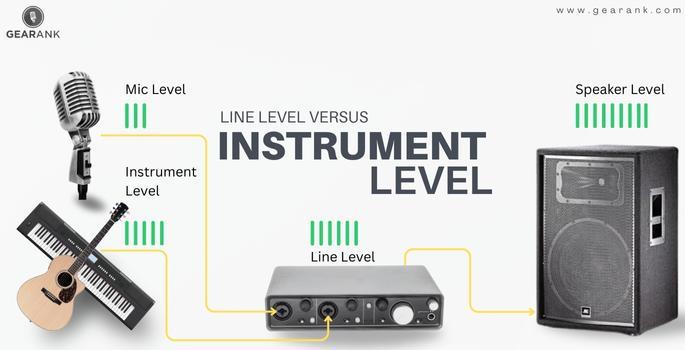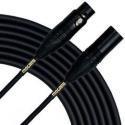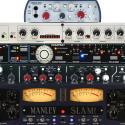Line Level vs Instrument Level - A Simple Explanation

You've probably experienced this issue.
You plug in your piano or electric guitar to your audio interface, and the signal becomes weak or lifeless. You see that there's a switch LINE and INST. Both connect to the same socket, yet one makes the sound louder than the other. What is going on?
Typically, we have 4 signal levels from lowest to highest in signal strength: mic level signal, instrument level signal, line level signal, and speaker level signal. Each of these has voltage requirements you have to match.
In this Gearank article, we will focus on the two most compared ones: Line level vs instrument level.
Let's demystify this now.
What Are Line and Instrument Level Signals?
These two signal levels have one purpose: to be able to relay audio signals without losing quality.
Different equipment have voltage configurations that are supposed to match. Otherwise, putting the wrong configuration to a different input will either make the resulting signal weaker or distorted.
1. Line Level Signal
Line level is the signal level typically found in hardware audio gear.
Line input is stronger than instrument input due to their high voltage levels. However, line-level signals are all set to different standards.
Two units of measurement you have to keep in mind: dBV (decibel voltage) is a commonly used term for consumer-oriented audio, While dBu (decibels unloaded) is a standard measurement unit in audio engineering.
Consumer line level is the signal you'll find in CD players and phones, which is around -10dBV.
On the other hand, the audio signal transmitted at a professional line level found in the line level inputs and outputs of mixing desks, audio interfaces, and preamps is around +4dBu. Powered instruments such as drum machines, keyboards, and synthesizers are set to line levels and rated at line levels. They usually have a line level output that allow them to connect directly to PA systems.
2. Instrument Level Signal
On the other hand, the instrument level signal is the level produced by electric musical instruments (around -30dB to -10 dB). These include acoustic guitars, bass guitars, and electric guitars.
Instrument signal input has high impedance. This means you don't need a lot of voltage to drive the signal to a usable level.
An instrument level signal requires a preamplifier, power amp, or audio interface to boost the level signal to line level to match correctly.
Mic Level vs Line Level
Mic level is the signal a microphone produces when it picks up sound. Unlike line level, microphone line level signals are typically weak and, similar to instruments, need to be boosted to a usable level (to line level signal) using mic preamps.
Boosting the audio signal levels of mics with a mic preamp is the key to recording vocals properly. In the same way, low instrument and mic level signals will result in noise and distortion when boosted. The same will happen if you boost the microphone level without setting the proper input signal.
Impedance simplified: Line Level vs Instrument Level
You always hear impedance thrown around in audio or guitar vocabulary. The line level is low impedance, and the instrument level is high impedance.
It's helpful to visualize them as 2 garden hoses--one has a small hole, and the other has a big hole. If you want to water your plants using as little water as possible to "drive" with enough pressure, which hose would you use?
Despite having a bigger gauge, low impedance input requires less power to drive the signal to the line-level input.
A high-impedance input is the garden hose with thicker linings. To drive the signal, you need more voltage to drive the input.
Which gear goes where?
Line Level Input
-
Audio interface
-
Mixing desks
-
Preamps
-
Signal processing equipment
-
Keyboards
-
Synthesizers
Instrument Level Input
-
Audio interfaces
-
Acoustic or electric guitars
-
Bass guitars
Final Thoughts
Line level vs instrument level--Both of them are different in terms of voltage requirements. Line level requires more voltage compared to instrument cables. Knowing these levels is crucial for recording pro audio because not all instruments have the same voltage requirements. The next time you see a keyboard or a guitar, you know that a keyboard uses LINE and the electric guitar uses INST.
Contributors:
Allen Articulo - Co-writer
Jerry Borillo - Illustrator












